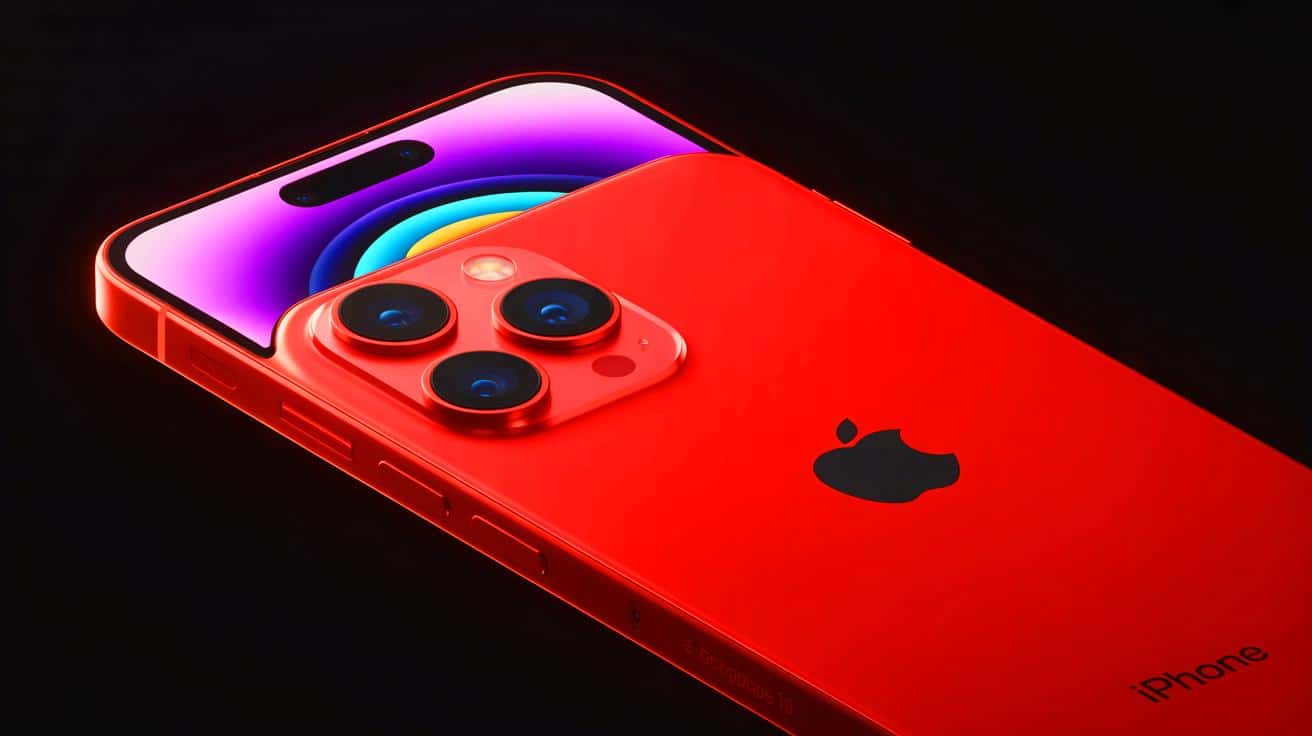IN A NUTSHELL
📱 The iPhone 18 is rumored to introduce a smaller Dynamic Island for a streamlined interface.
🔍 Anticipated advancements include under-display Face ID technology for a seamless screen experience.
🔄 Apple might unveil its first foldable iPhone with innovative design features and high-end specifications.
💡 The new A20 chip could deliver a significant performance boost with improved energy efficiency.
The iPhone 17 may have just hit the shelves, but anticipation is already mounting for Apple’s next big release, the iPhone 18. Although it’s a year away, the rumor mill has been churning with potential innovations and design changes. From whispers of Apple’s first foldable phone to significant design tweaks, the iPhone 18 is shaping up to be a pivotal release in Apple’s storied history. Based on these early speculations, let’s explore what the future might hold for one of the world’s most influential tech companies.
Redefining the Dynamic Island Experience
One of the most talked-about rumors surrounding the iPhone 18 involves a redesign of the Dynamic Island feature. Reports suggest that Apple plans to shrink the Dynamic Island, creating a more streamlined interface. This change is made possible by the development of slimmer components, although under-display Face ID or a hidden selfie camera might not be ready for this iteration. The reduced screen real estate taken by the Dynamic Island may enhance user interaction, offering a more immersive experience.
The adjustments to the Dynamic Island reflect Apple’s commitment to refining user interfaces and optimizing space on the display. As smartphones increasingly become central to daily life, these incremental but strategic design changes can significantly impact usability and user satisfaction. Apple’s ability to balance aesthetic design with functional utility remains a hallmark of its product strategy.
Advancements in Face ID Technology
Another major leap anticipated with the iPhone 18 is the integration of under-display Face ID technology, at least for the Pro models. Analyst Ross Young has long predicted this development, and the 2026 timeline seems to align with these expectations. Moving Face ID sensors beneath the display would afford a cleaner, edge-to-edge screen, with only the camera remaining visible on the front.
The technological challenge of embedding sensors under the display involves ensuring that security and performance are not compromised. Apple’s potential success in this area could set new standards for smartphone security and design, as the company continues to lead in facial recognition technology. This innovation might also influence other smartphone manufacturers, compelling the industry to pursue similar advancements.
Introducing a Hole-Punch Design
For the iPhone 18 Pro and Pro Max models, there is speculation about a shift to a hole-punch design, effectively eliminating the notch. This change would align Apple with several Android competitors that have already adopted this design choice. The transition involves situating sensors beneath the display, furthering the trend toward minimalistic front-facing designs.
Embracing a hole-punch design reflects Apple’s willingness to adapt and innovate while maintaining its unique design language. Such changes underscore the company’s focus on maximizing screen space and enhancing the visual appeal of its devices. This design evolution could serve as a precursor to even more radical changes in future Apple products, continuing the brand’s tradition of pushing boundaries.
Exploring a Touch of Transparency
Adding an element of surprise, rumors suggest that the iPhone 18 Pro models might feature a transparent section of glass on the back. This design choice, likely more aesthetic than functional, would expose a new vapor chamber cooling system introduced with the iPhone 17 Pro. Such a feature could enhance the visual intrigue and allure of the device.
Transparency in design can symbolize openness and innovation, attributes that Apple has consistently embodied in its product philosophy. While the practical benefits of a transparent section may be limited, it represents Apple’s ongoing exploration of new design possibilities. This innovation could also inspire future iterations of the iPhone, as well as influence design trends across the tech industry.
Apple’s Ambitious Technological Leap with the A20 Chip
Behind the scenes, the iPhone 18 is expected to feature the A20 chip, marking a significant technological leap. The A20’s anticipated transition to a 2nm process promises about 15% more performance while using 30% less power compared to the A19. This improvement exemplifies Apple’s dedication to advancing processing power and energy efficiency in its devices.
Such advancements in chip technology are crucial as smartphones continue to handle more complex tasks and applications. The A20 chip could enable new features and capabilities, enhancing the overall user experience. By investing in cutting-edge chip development, Apple reaffirms its position as a leader in tech innovation, setting benchmarks for performance across the industry.
The Future of Apple’s Foldable iPhone
Among the most exciting rumors is the potential for Apple’s first foldable iPhone, which could debut with the iPhone 18 Pro models or in early 2027. This foldable device is expected to feature a titanium hinge for durability, aiming for a crease-free fold, and boasting a starting price near $2,000. With specifications like 12 GB of RAM and dual 48 MP rear cameras, the foldable iPhone could redefine the smartphone landscape.
The introduction of a foldable iPhone would mark a significant milestone in Apple’s product lineup, showcasing the company’s commitment to innovation and adaptability. As foldable technology gains traction, Apple’s entry into this market could drive widespread adoption and push technological boundaries. The move towards foldable devices raises intriguing questions about the future of smartphone design and functionality.
As the iPhone 18 rumors continue to circulate, Apple enthusiasts and tech analysts alike eagerly await official announcements. The potential innovations, from a redesigned Dynamic Island to the introduction of a foldable model, highlight Apple’s relentless pursuit of innovation. As technology evolves at a rapid pace, how will Apple’s design choices and technological advancements shape the future of smartphones?
This article is based on verified sources and supported by editorial technologies.
Did you like it? 4.6/5 (29)

